We all love our cats. Their furry cuteness makes every day brighter. But when Puss is butting against your legs asking for a piece of your favorite pizza, should you oblige? Is it safe for them to have a bite? Or should you resist their feline persuasion tactics?
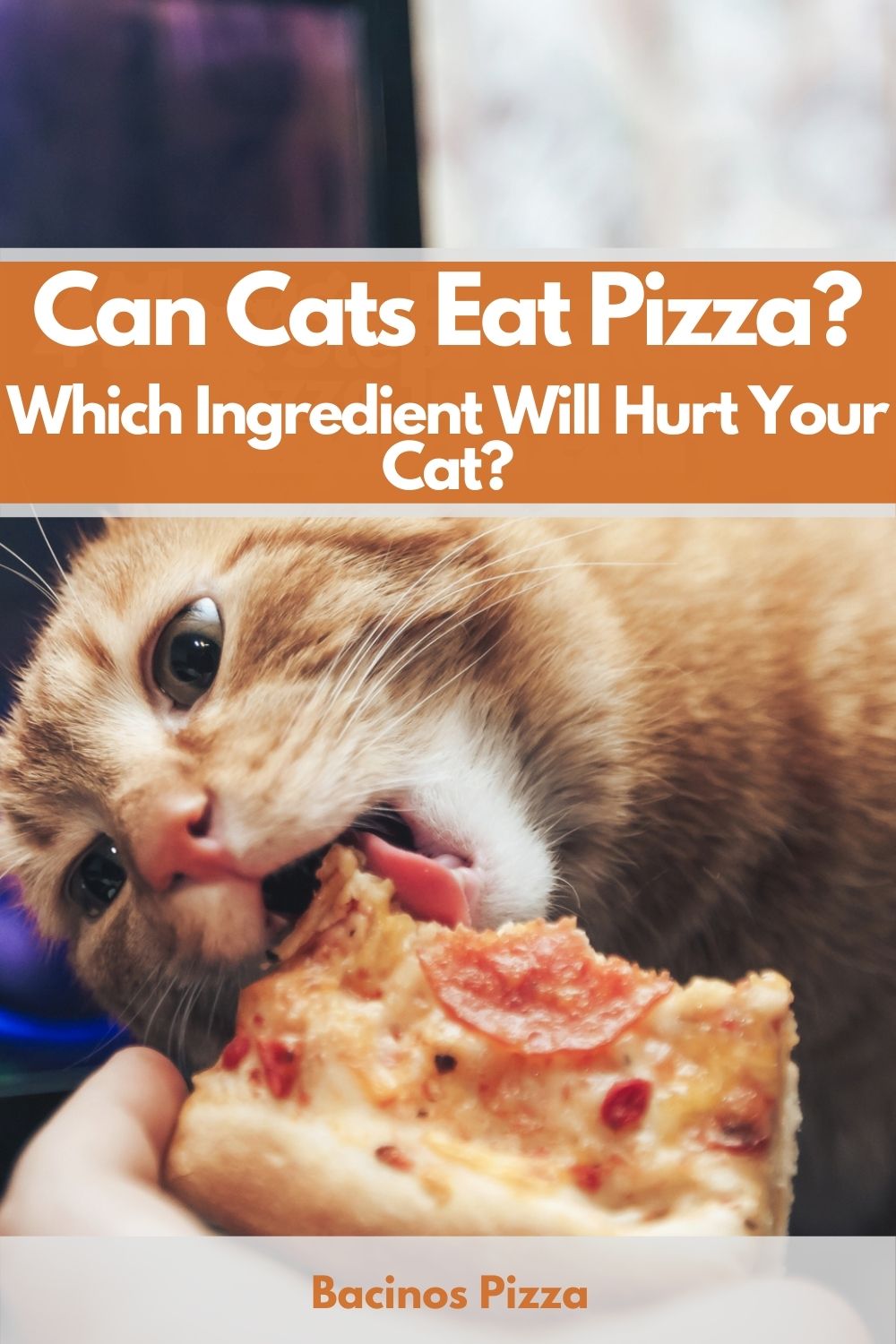
We’re going to look at the different components of pizza and how they interact with your pet’s digestive system. So can cats eat pizza? Read on and find out!
The crispy crust
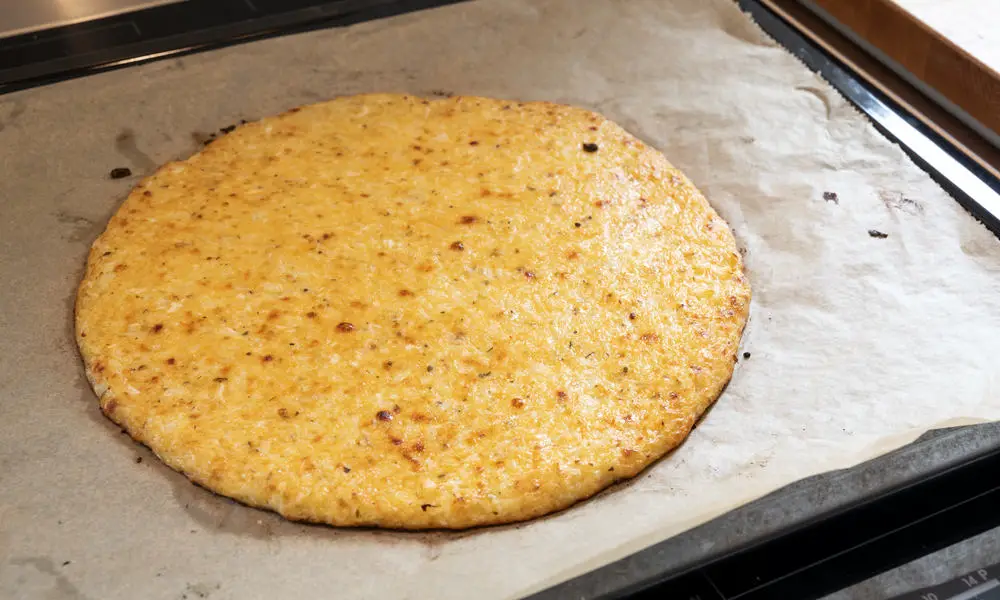
That delicious pizza crust is made of just a few simple ingredients – flour, water, salt, yeast and olive oil. As long as it’s properly cooked through, it’s fine for your cat to nibble – if they’re interested.
But without any toppings, Puss may not be bothered. After all, would you eat a dry pizza crust? And even if they do, it’s not a healthy choice. The crust has lots of calories, but no nutritional value for your cat.
Just as with humans, weight gain in cats can lead to all kinds of health problems. So while a small piece of plain crust isn’t the end of the world, avoid getting them into the habit of sharing human food. It’s the best way of keeping your pet healthy.
One more quick note about the crust, before we move on. While a small amount of a fully baked crust won’t do your cat any harm, raw dough is a different matter. The active yeast is exceptionally poisonous to cats.
That’s because it ferments inside your cat’s body, producing ethanol and carbon dioxide. Even small amounts can lead to bloating and intoxication. There have even been cases of cats requiring surgery to remove an expanded dough ball.
So if you’re making pizza at home, keep your cat well away from the raw dough. If the worst happens and your cat ingests some, contact your vet immediately.
The cheesy topping
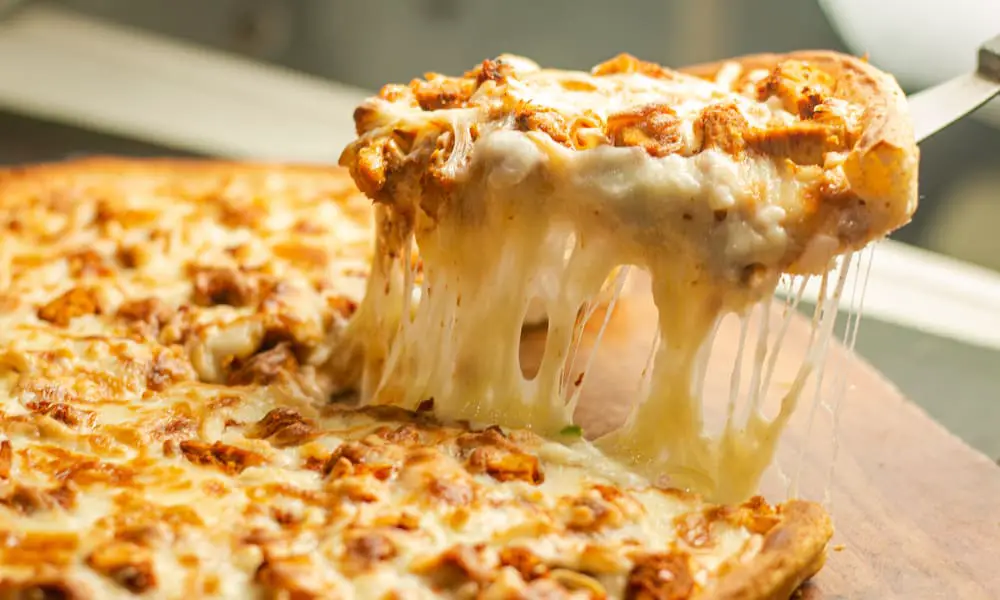
Most cats love cheese. Unfortunately, cheese doesn’t always love your cat’s tum.
Despite the traditional idea that a saucer of milk is a great cat treat, many cats are actually lactose intolerant. That means that their bodies don’t break down lactose and it remains sitting in their stomach.
Whilst there, it begins to ferment, giving off gases. This isn’t as serious as with the yeast in raw pizza dough. But it can still cause bloating and stomach cramps, as well as flatulence.
And even for those cats who aren’t lactose intolerant, cheese is high in fat. The same reasons we humans should avoid a high-fat diet apply to cats too. Weight gain puts pressure on their joints, as well as on their internal organs. That can lead to all kinds of problems.
If your cat loves cheese-flavored cat snacks – and let’s face it, most cats do – make them an occasional treat. They’re packed with saturated fats, so don’t give them too many or too often.
And when it comes to that cheesy pizza, it’s best for your cat to steer clear.
The tasty tomato sauce
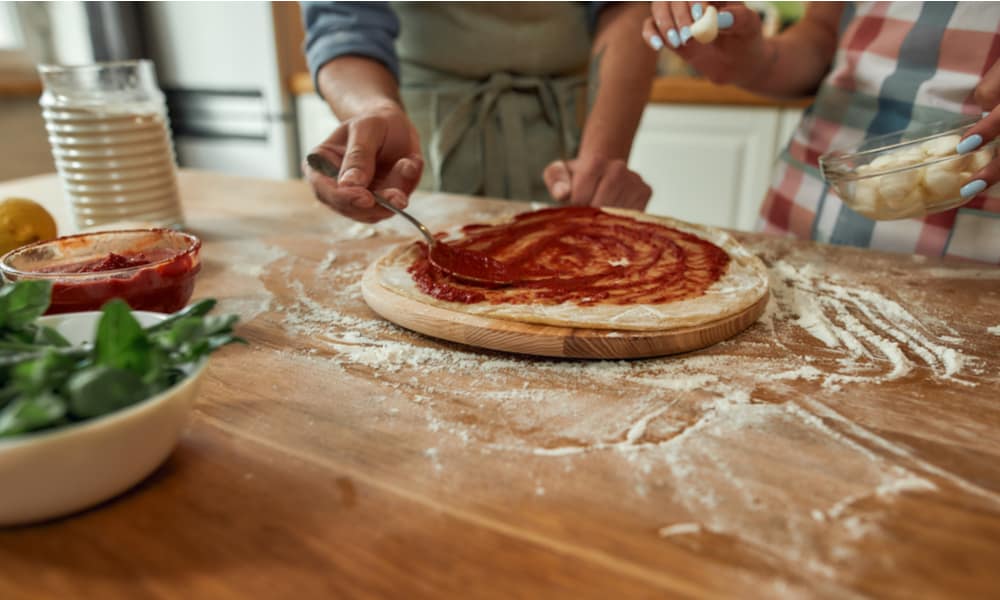
To look at the effects of that tasty tomato sauce, we need to consider everything it contains. In most cases, tomato sauce will combine tomatoes with salt, and often with garlic and onion too. So how do cats’ digestive systems cope with those ingredients?
Tomatoes are a bit of a mixed bag. They contain healthy vitamins and minerals. But unripe tomatoes also contain a chemical called solanine, which is toxic to cats. It’s present in any green part of the tomato. And that includes the stems and leaves of any plants you have in your garden.
A cat that nibbles on the leaves of your tomato plant is unlikely to have more than a mild stomach upset. But keeping your plants away from your cat is still a good idea for both of them!
The tomatoes used for tomato sauce will, of course, generally be ripe. So while some solanine may sneak in, it’s unlikely to be present in quantities to cause problems.
Garlic and onion, however, are a different matter. These are commonly added to the tomato sauce on pizza to give it a richer flavor. But together with other vegetables in the Allium family, like chives and leeks, they’re toxic to cats.
Garlic and onions
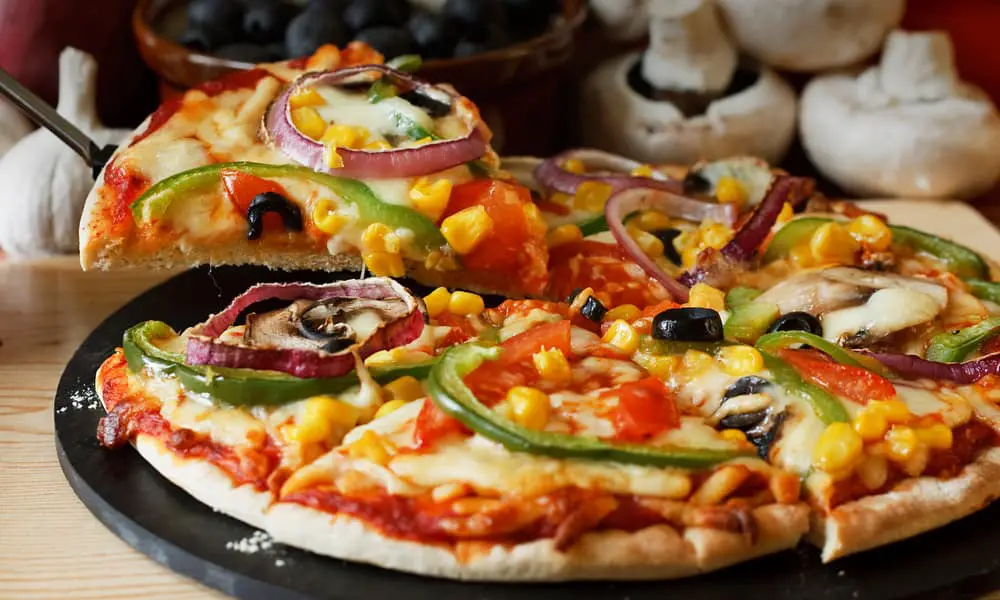
Onion and garlic powder are just as dangerous as the raw vegetables. Garlic is the more toxic of the two, but both should be avoided.
The chemical that’s to blame is something called n-propyl disulfide. This attaches itself to the surface of your cat’s red blood cells. Their body recognises it as an invader and attacks it, in the process breaking down the cells.
Red blood cells carry oxygen around the body, and their loss can lead to anaemia. Your pet may be lethargic, weak and lose their appetite. Other symptoms include pale gums and dark urine, which is colored by the lost red blood cells.
All this means it’s not worth taking a chance feeding your cat pizza with tomato sauce on top. And that goes double for any pizza with onion or garlic included as toppings.
Salt
Salt is added to both the pizza crust and sauce. And if you have any processed meats as toppings, they’ll be high in salt too.
We know that eating too much salt is bad for humans. But does the same apply to cats?
Well, some salt plays an important role in your cat’s diet. The recommended amount is about 21 milligrams per day. But just as with people, too much salt can cause problems. Your cat shouldn’t be eating more than 42 milligrams of it daily.
High levels of salt will upset the delicate balance of electrolytes in your cat’s body. Your cat may be unable to walk normally, they may be sick or have diarrhea, and even have seizures.
These are extremes, but if your cat shows these signs, take them to the vet immediately. Salt toxicity can be treated with an IV drip to rebalance your cat’s electrolytes.
It’s very difficult to know how much salt your cat will be consuming if they eat pizza. But pizza is salty food, so it’s wise to keep them away from it.
And remember that they’ll also be getting salt from their other food. They can even ingest it from licking their paws clean of rock salt if they go outside in bad weather.
The wisest course of action to maintain proper salt levels is to feed your cat only cat food. That will have been properly prepared to meet your pet’s nutritional needs.
Everything else
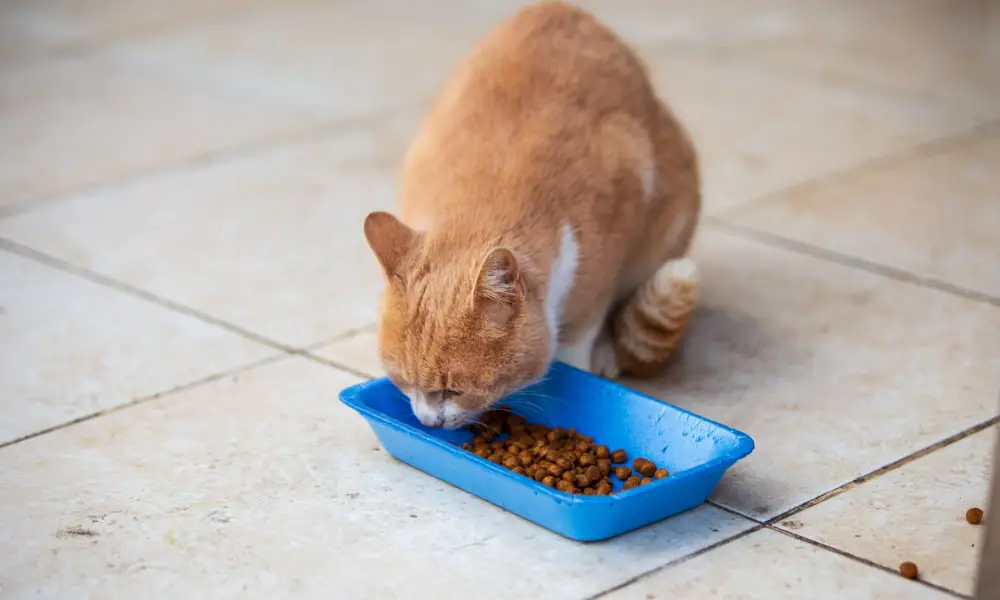
We’ve looked at the crust, cheese and tomato sauce. But what about the other toppings on your pizza? If your cat can’t share your pie, can you at least give them a nibble of what’s on top?
Well, that depends on what it is.
Processed meats like pepperoni are high in both fats and salt. While the occasional piece is unlikely to cause any serious problems, eating it regularly will. So it’s best to resist the temptation to share a piece, and avoid your cat developing a taste for it.
Tuna may seem like a healthier choice but, surprisingly, it too presents some challenges for our feline friends. Tuna prepared for human consumption has too much unsaturated fatty acid. That can lead to a condition known as steatitis, inflammation of your cat’s fatty tissues, which is very painful.
Cooked and unseasoned lean meats like turkey or chicken, however, are fine. They’re also better for you, the primary pizza-eater, too! So if you make a healthier choice for your pizza topping, there’s no reason your cat can’t share a bite.
Just bear in mind that by doing so, you’re teaching your pet to expect a share of your meals. That might help you to bond in the short term. But regularly sharing human food introduces a range of risks into your cat’s diet.
It’s far better for them to stick to cat food. And you can still get that sharing experience by giving them a healthy cat treat instead of a bit of pizza. There are some excellent nutritionally balanced treats available for cats. And your pet will enjoy the flavor just as much as – if not more than – pizza!
Healthier options for cats
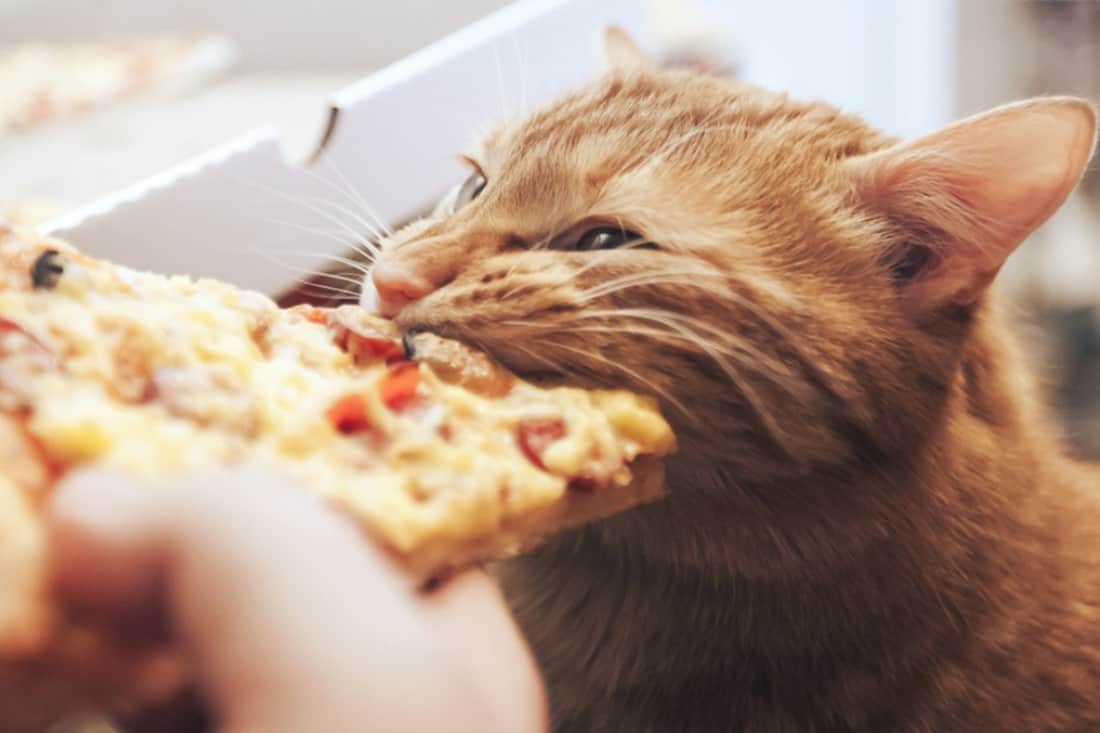
So if you want to give your cat a healthy treat while you eat your pizza, what are the options?
Well, you could buy tuna loin or mackerel fillet, especially prepared for cats. Some freshly cooked chicken or white fish is a healthy choice that always goes down well.
And you could even make your own cat treats. This recipe uses just tuna, egg and flour. But remember, homemade or not, this is designed as an occasional treat. Don’t give your cat too many!
So in summary …
If your cat gets hold of a bit of pizza, you’re unlikely to need to rush them to the vet. But it’s not a healthy option. At best, it’s full of empty calories that can lead to weight gain and its associated health problems. At worse, some slices contain ingredients that can harm your cat.
If you want to give your cat a treat while you eat, choose something designed for their digestive system. A simple piece of chicken or white fish, or even the occasional cat treat, will keep them just as happy. And it will give your furry companion the best chance of enjoying a long and healthy life at your side.
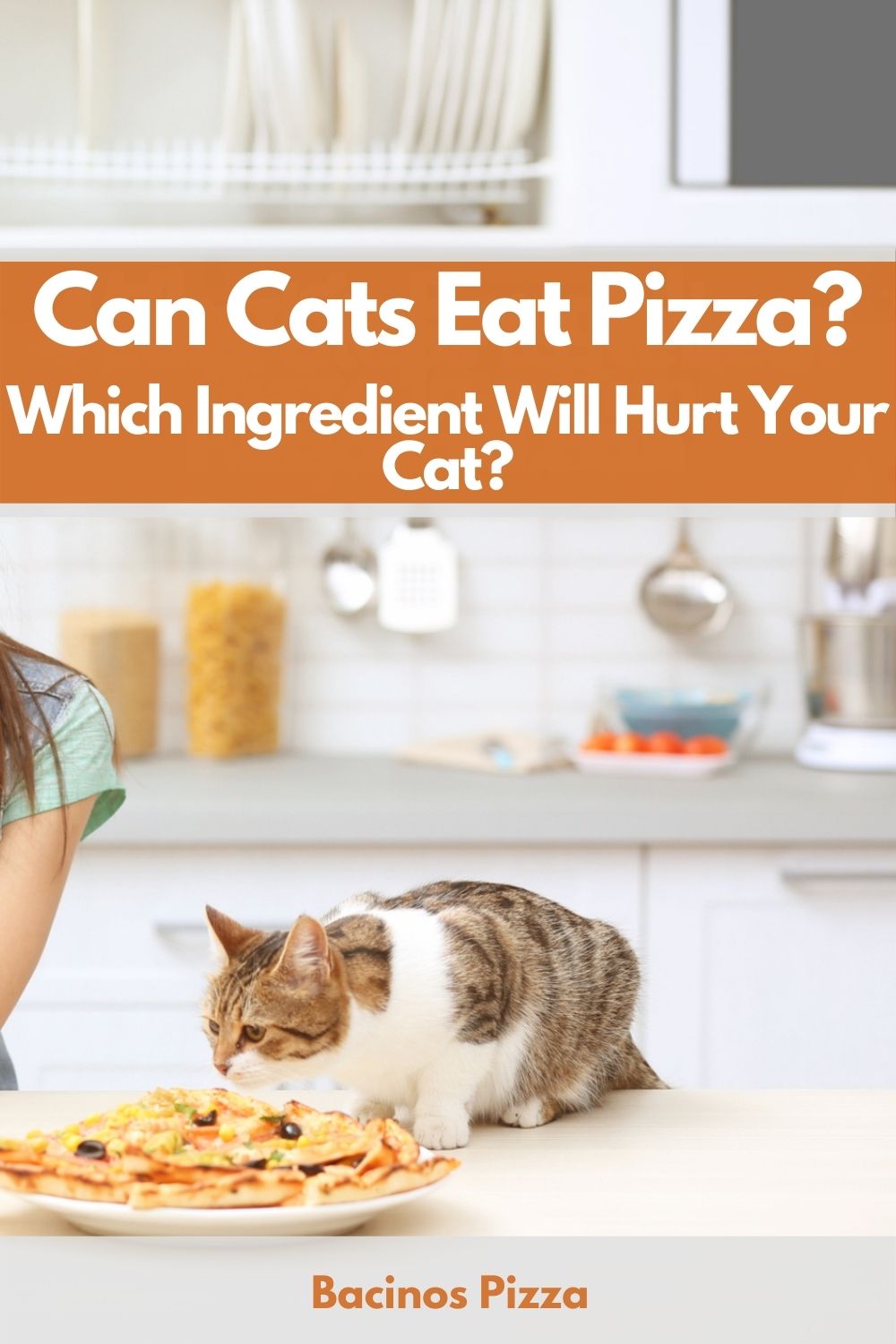

Julie has five years of experience in the restaurant industry, she decided to share her knowledge about her liking and fondness for food and pizza, of course, cooking as her love language. She’s very passionate about what she’s doing, making all the things she writes regarding pizza recipes, very amazing!